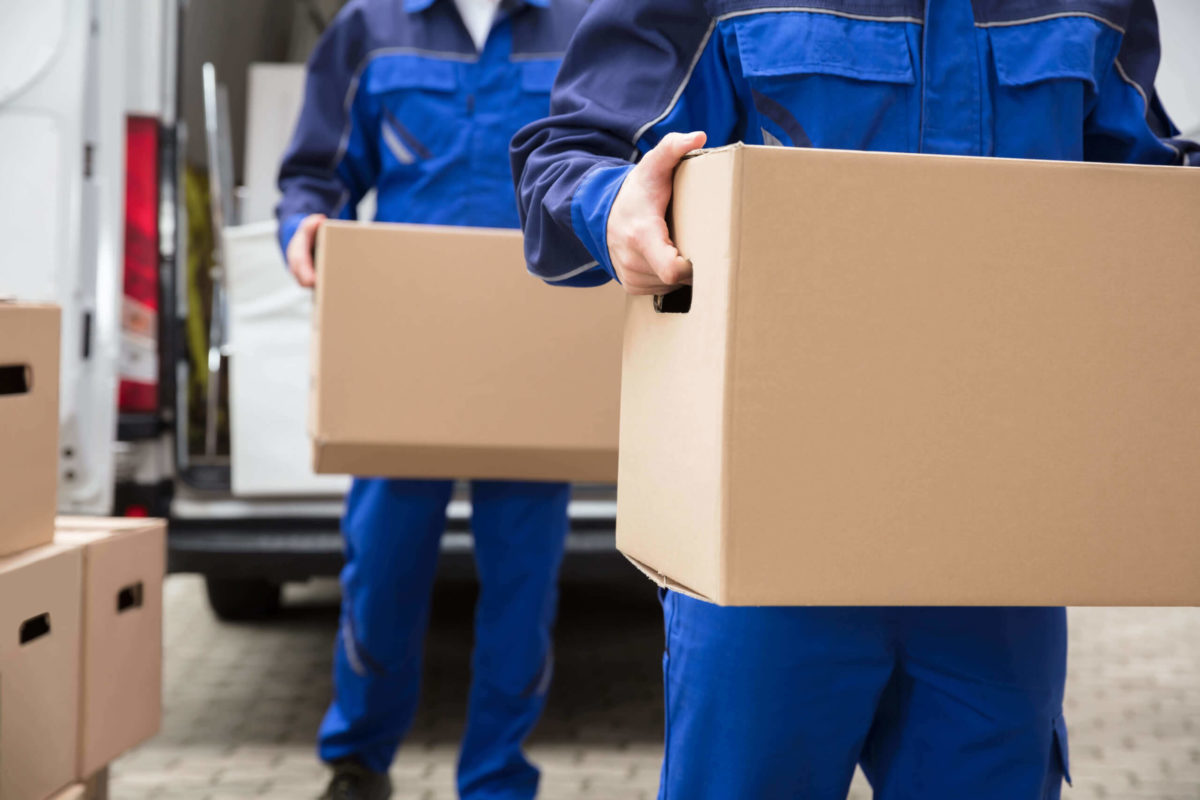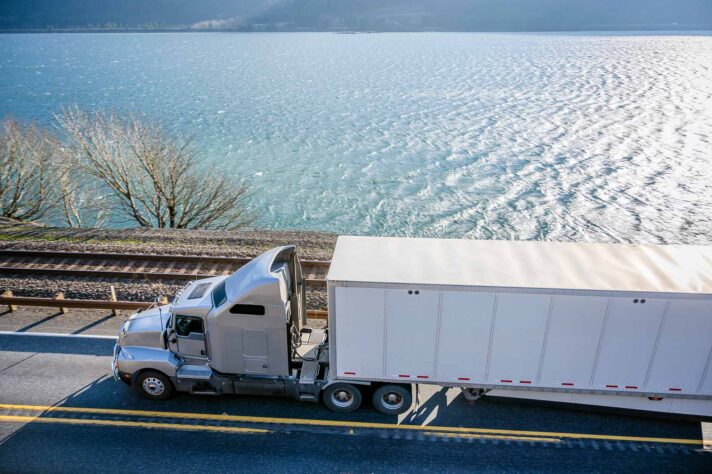Meticulous packing and unpacking are only some of the tasks that await. Still, there’s much more to consider and add to your checklist. Start getting ready at least 60 days before the day of your move and make sure to follow these guidelines.
The Definitive List of Things to Do When Moving to a New Home
When deciding to change your address and jumpstart your life in an entirely different location, there are steps you should take in order to do everything correctly. Moving to a new home requires careful planning and a lot of research. However, with these proven tips, it can be quite easy.


Check Out the List of Things to Do When Moving Into a New Home
Experts suggest that you should start to plan your move two months in advance. However, you can divide the whole process into three sections: before, during, and after the relocation.
Before the move, you should do a lot of searching. Also, you will be making to-do lists to stay organized and relocate smoothly:
- Research the housing market, prospective employers in the area, and search for the best long-distance moving company,
- Start planning the packing process in advance and don’t forget to declutter your old place before you get packed,
- Get the right packing materials for free or find some boxes and other supplies cheaply,
- Take close-ups of your belongings and create a photo inventory,
- Create a schedule you will follow and set a date for the move,
- Calculate your costs and come up with a relocation budget,
- Speak with your family, friends, neighbors, and inform your employer.
Now, as the big day approaches, you will also have to purchase several important items and supplies. And lastly, there will be administrative tasks to take care of. The ultimate checklist you should follow entails:
- Exploring and assessing your future place to detect any issues,
- Cleaning every room thoroughly,
- Securing the doors, windows, and other areas,
- Changing the locks,
- Contacting utility companies, service providers, tax agencies, and the post office to inform them of the address change,
Lastly, getting reliable relocation and packing services from reputable long-distance movers before you get to your chosen destination is the easiest way to have an efficient move and a pleasant experience.
What to Buy When Moving Into a New Home
Whether you’re relocating to another state alone or with family, there are some things you should purchase beforehand. Here’s the list of essential items you will likely have to buy:
- Cleaning supplies, rags, rubber gloves, and a plunger,
- Bathroom products and items like towels, bath maths, a showerhead, and curtain,
- Mattress, pillows, sheets, and bedding,
- Household decor, rugs, and drapes,
- Various tools and equipment (and an adequate box to pack them),
- Flashlight, lightbulbs, and batteries,
- Garbage cans and bags,
- Hangers, iron, and ironing board,
- Safety tools (smoke detectors, fire extinguisher, security camera, etc.)
Regardless of whether you’re relocating to a big city or a small town, knowing what you need and getting it on time is paramount.


Take a Tour of the House
The ideal moment to do a complete walkthrough of your next place is while it’s empty. Before packing your furniture or buying new pieces of it, you should know the precise measurements of the future household – and set your goals accordingly. But first of all, double-check that:
- The previous owner has done all agreed repairs,
- All the things that were included in the sale are present in the home,
- Outlets, switches, and everything else is working properly.
If you encounter a problem that goes against the previously made agreement, call your realtor immediately. Any other issues that you might find will be your concern. It will be up to you to arrange repairs and contact a handyman later on.
Pro tip: To save up on space and reduce relocation costs, you should donate unwanted items from your old household. Donating furniture you no longer want to use is an excellent way to minimize your expenses and make the move easier while obtaining more space (and more freedom to come up with a fresh style).


Make Sure to Clean Everything Thoroughly
What is the first thing to do when moving into a new house? Aside from measuring everything precisely and figuring out what goes where, you should clean the entire household. Always start from the top and work your way to the floors. Additionally, here are the things to approach with extra care:
- Clean the refrigerator and then the rest of the kitchen,
- Be extra careful with drawers, cabinets, and the space behind the stove,
- Pay attention to faucets, filters, and garbage disposal,
- Move on to the bathroom,
- Remove the dust from ceiling fans and chandeliers in the living room and bedroom,
- Disinfect light switches, handles, and doorknobs,
- Wipe the blinds and wash the windows,
- Pay attention to the yard and other areas outside the house.
Keep cleaning item by item and tackle each room. If you don’t have enough time to dedicate to the cleaning process, hire a professional team to lend you a hand.
Clean Up and Organize the Storage Areas
How do you plan to use your garage? Will your car be parked there or will it serve as a storage unit? Since improvised storage rooms usually have the most clutter, clean them up first and then create a plan to keep them as tidy and organized as possible. You can keep some of the boxes there until you get everything in order and unpack all belongings.
Install shelves and cabinets that will help you remain well-organized and neat even months after the move-in day. The garage, attic, and basement also demand planning and order. Be sure to start using them correctly.


Set Up the Utilities
Forgetting to reach out to utility service providers and transfer utilities timely are some of the most common relocation mistakes. Most people get too busy creating their household inventory list and figuring out how to deal with packing electronics, lifting and disassembling furniture, or packing kitchen items, and that’s how they skip this essential step. When relocating, you must notify your utility providers on time. It is best to contact them two weeks before the relocation day. Just don’t forget to call or email these providers:
- Gas and electricity services,
- Heating and cooling service,
- Water and sewer company,
- Phone, cable, and internet suppliers,
- Local waste management and garbage pick-up services.
If you want your place to be ready, set, and livable straight from day one, be sure to keep all relevant companies updated.
Check Where the Fuse Box and Water Valve Are
It’s best to identify the locations of your fuse box and water valve ASAP. If the power suddenly goes out or you need to turn off the water for any reason, you’ll know exactly where and how to do it. Fuse boxes are usually placed in the basement, garage, or storage room. Your home’s water valve is most likely located around the outline of your house.


Change the Locks and Take Care of the Security System
Changing the locks in your future residence is an excellent way to start the chapter and ensure that everyone (and everything) is safe. Why is this step so significant? Even if you’re not worried about the past owner, there is no way of knowing who else might have a key, from extended family to repairmen.
You should schedule a locksmith to come by or change the locks yourself if you know how to do it. You could do the same with the doors inside your household, especially those that lead toward the front door. That will just add another layer of protection. These changes carry quite small costs, but they’re more than worth it. Your security and peace have no price.
Make Sure to Secure the Inside of the House: Child-Proof and Pet-Proof Everything
Relocating with children entails a whole other set of responsibilities. Aside from striving to make the process fun, stress-free, and enjoyable for the kids, there is a range of chores that await. The list of things to do after relocating now includes baby-proofing your home as well – especially if you have a newborn or a toddler:
- Take good care of the doors, windows, and staircases,
- Keep an eye on loose cords and furniture pieces,
- Remove hazardous and flammable items, small objects, sharp elements, and cleaning products,
- Keep away medicine, vitamins, and similar products by storing them in cabinets that the kids can’t access,
- Don’t forget to keep the boxes with fragile items out of the children’s reach.
Also, if you are relocating with pets – there will be similar drills to keep in account. Make your family’s safety your prime goal.
The following video might help you with baby-proofing your place:
Change Your Address
Many people who have moved recently feel baffled by the fact that they keep getting mail for previous residents. So if you’re wondering what to do when moving into a new home, contacting your post office and notifying them of the address change is one of the most important tasks to fulfill.
Once you inform them of the changes, you should also keep your subscription services, bank or credit card company, or loan providers in the loop. When you change your address, be sure to notify the IRS and other tax companies too.


Don’t Forget to Research Cross-Country Movers Before Moving to a New Home
Hiring the most trustworthy long-distance movers implies some research. To get the best cross-country moving services, you should compare prices, read the reviews, and comb through information. You will find the right team and avoid relocation scams by keeping an eye on these warning signs:
- Frequent name changes and a lack of relevant information,
- Over-the-phone estimates only,
- Cash payments only,
- Too high or incredibly low estimates,
- No contract template available,
- Prices based on the wrong criteria.
Ultimately, you should run a background check on your prospective allies through the FMCSA website.


What Is the Luckiest Day to Move into a New House?
According to statistics, most people choose to move during the warm months. Although relocating during the holidays is also a very popular option, it is best to choose a less busy (and less expensive) period. If you want to move during the winter, you’ll undoubtedly save more than a few bucks since the cold months are the cheapest time of the year to move. However, the weather conditions might add to the complexity and to relocation stress.
And since each season has some impressive perks and some downsides to keep in mind, the luckiest day to move might be right now. That is – if you plan it rightly, follow our tips, and choose the most reliable cross-country movers. By renting a suitable storage unit and getting the best relocation, packing, and car shipping services, you will get a simple and stress-free move and the fresh start you’ve always hoped for.




